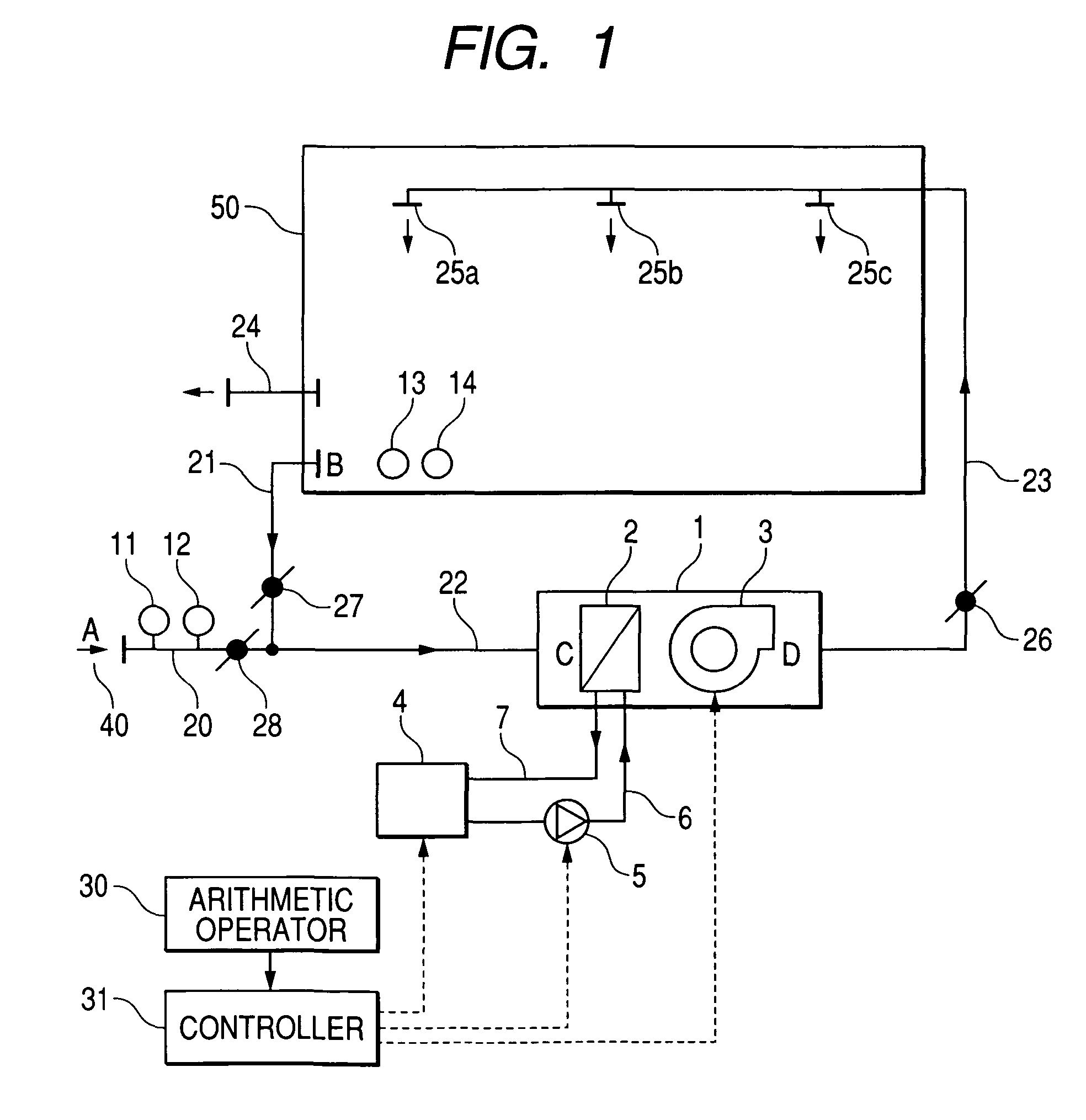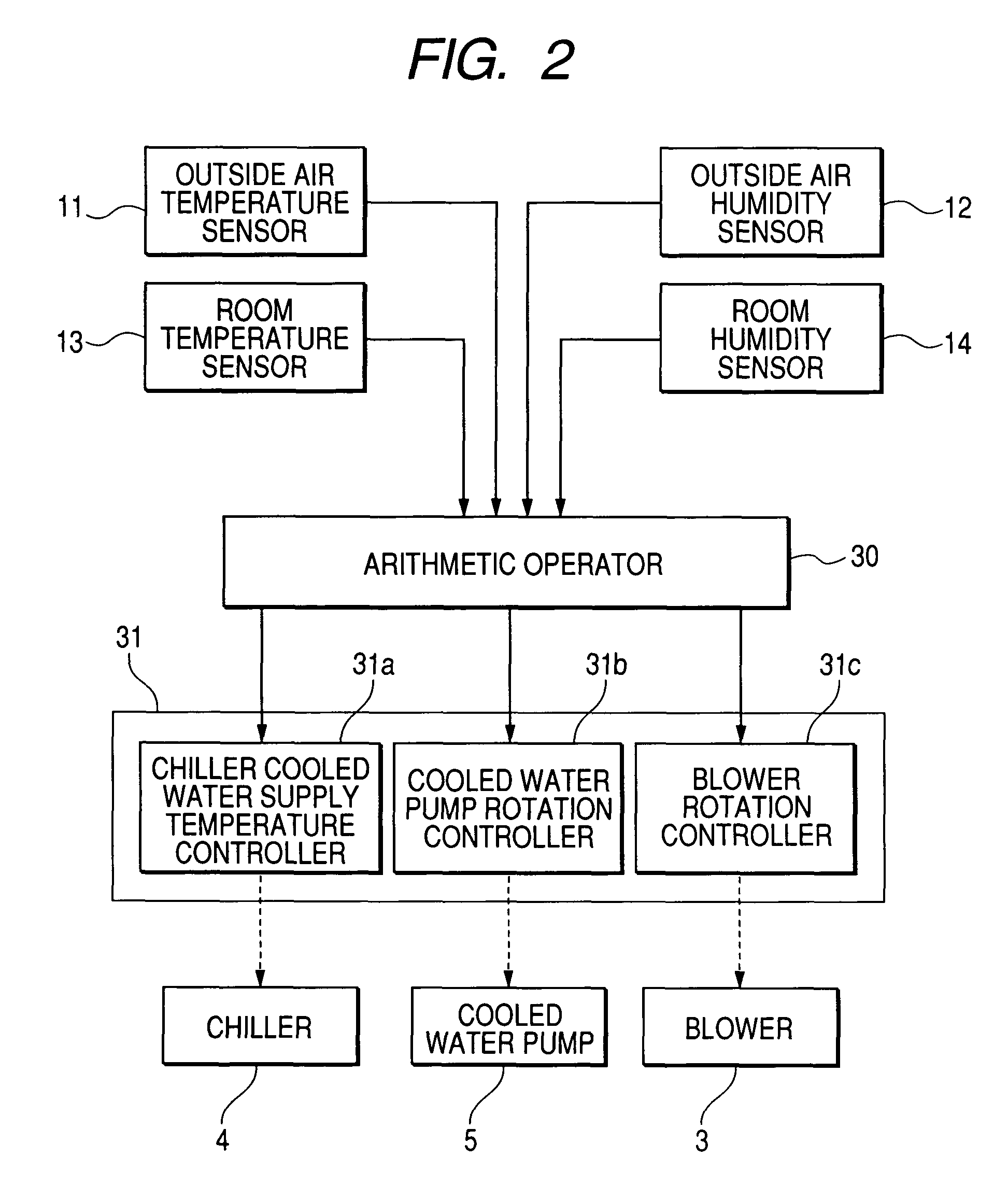Air conditioning apparatus
a technology for air conditioning apparatus and chiller, which is applied in the direction of domestic cooling apparatus, heating types, instruments, etc., can solve the problems of increasing the load of the chiller, and often leaving the humidity to chance, so as to reduce the amount of consumed energy, prevent the increase of the chiller load, and save the energy consumed by the air conditioning apparatus as a whole system
- Summary
- Abstract
- Description
- Claims
- Application Information
AI Technical Summary
Benefits of technology
Problems solved by technology
Method used
Image
Examples
first embodiment
[0041]FIG. 1 is a block diagram showing a structure of an air conditioning apparatus for explaining the first embodiment according to the present invention. The first embodiment shown in FIG. 1 is composed of a line for supplying air and a line for supplying chilled water as a coolant. The line for air is composed of an outdoor air duct 20 for taking outdoor air 40, an air returning duct 21 for returning the air from a room, an intake duct 22 for supplying outdoor air or return air to an air-conditioning unit 1 connected to the outdoor air duct 20 and the return air duct 21, the air-conditioning unit 1 comprising a cooling coil 2 and a blower 3, a supply air duct 23 for guiding air exhausted from the air-conditioning unit 1 into the room, a plurality of air supply openings 25 provided within the room, and an exhausting duct 24 for exhausting the air in the room to the outside thereof.
[0042]The outdoor air duct 20 includes an outdoor air damper 28, while the return air duct 21 includ...
second embodiment
[0072]A second embodiment according to an aspect of the present invention will be explained with reference to FIGS. 9 to 11. FIG. 9 is a block diagram showing a structure of the air conditioning apparatus for explaining the second embodiment of the present invention. FIG. 10 is a block diagram for explaining the second embodiment of the present invention. Moreover, FIG. 11 is a flowchart for explaining the operations of an arithmetic unit in the second embodiment of the present invention.
[0073]In the embodiment illustrated in FIG. 9, the difference from the first embodiment of FIG. 1 is that a supply air temperature sensor 15 for measuring the temperature of air at the exit of the air-conditioning unit 1 and a supply air humidity sensor 16 for measuring the humidity of air at the exit of the air-conditioning unit 1 are provided, and the other structure is identical to that of FIG. 1. In the embodiment of FIG. 10, the difference from the first embodiment of FIG. 2 is that the arithme...
PUM
 Login to View More
Login to View More Abstract
Description
Claims
Application Information
 Login to View More
Login to View More - R&D
- Intellectual Property
- Life Sciences
- Materials
- Tech Scout
- Unparalleled Data Quality
- Higher Quality Content
- 60% Fewer Hallucinations
Browse by: Latest US Patents, China's latest patents, Technical Efficacy Thesaurus, Application Domain, Technology Topic, Popular Technical Reports.
© 2025 PatSnap. All rights reserved.Legal|Privacy policy|Modern Slavery Act Transparency Statement|Sitemap|About US| Contact US: help@patsnap.com



